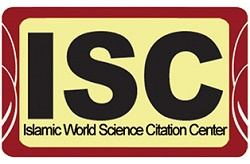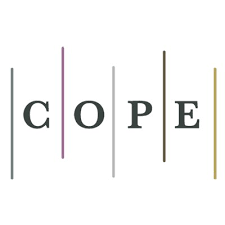Investigating the Effect of Dynamics Employment and Institutional Factors with a Focus on Economic Freedom and Ease Doing of Business on GDP per Capita in Iran
DOI:
https://doi.org/10.52547/ijimes.1.4.73DOR:
https://dorl.net/dor/20.1001.1.27832678.2021.1.4.7.3Keywords:
Institutional Factors, GDP, Economic Freedom, Age Structure, Dynamics Employment, Ease Doing of BusinessAbstract
Purpose: Since employment and growth is an important and key issue in the economy, having an efficient environment is very important for proper growth. Therefore, in order to improve the current situation and achieve proper development, it is necessary to study the effect of Dynamics Employment and institutional factors in order to identify the effective channels to improve the current situation, effective factors and appropriate growth.
Methodology: Therefore, the main purpose of this study is to investigate the effect of Dynamics Employment on GDP per capita in Iran during the period 2004-2021 using the generalized time series torque method.
Findings: The results show that Dynamics Employment have a significant effect on Iran's per capita GDP; Thus, the dependency rate of the elderly, the dependency rate of children and the negative impact and the participation rate, labor productivity rate, employment rate have a positive impact on GDP per capita. The results also show that institutional factors have a significant impact on GDP per capita growth and improving the indicators of economic freedom and ease of doing business, which are the most important institutional factors, accelerate growth and development.
Originality/Value: This paper investigated the effect of Dynamics Employment and institutional factors with a focus on economic freedom and Ease Doing of Business on GDP per capita in Iran.
Downloads
References
Ahmed, S., & Cruz, M. (2016). Making the most of demographic change in Southern Africa. World Bank Policy Research Working Paper, (7798).
Fathi, M., Haghi Kashani, M., Jameii, S. M., & Mahdipour, E. (2021). Big data analytics in weather forecasting: A systematic review. Archives of Computational Methods in Engineering, 1-29. https://doi.org/10.1007/s11831-021-09616-4
Nozari, H., Fallah, M., Kazemipoor, H., & Najafi, S. E. (2021). Big data analysis of IoT-based supply chain management considering FMCG industries. Бизнес-информатика, 15(1 (eng)). DOI: 10.17323/2587-814X.2021.1.78.96
Khare, S., & Slany, A. (2011). The dynamics of employment, the labour market and the economy in Nepal (No. 994621433402676). International Labour Organization.
Ghahremani Nahr, J., Ghodratnama, A., IzadBakhah, H. R., & Tavakkoli Moghaddam, R. (2019). Design of multi-objective multi-product multi period green supply chain network with considering discount under uncertainty. Journal of Industrial Engineering Research in Production Systems, 6(13), 119-137. DOI: 10.22084/ier.2017.8877.1421
Nozari, H., & Sadeghi, M. E. (2021). Artificial intelligence and Machine Learning for Real-world problems (A survey). International Journal of Innovation in Engineering, 1(3), 38-47.
Cruz, M., & Ahmed, S. A. (2018). On the impact of demographic change on economic growth and poverty. World Development, 105, 95-106. https://doi.org/10.1016/j.worlddev.2017.12.018
Bosma, N., Sanders, M., & Stam, E. (2018). Institutions, entrepreneurship, and economic growth in Europe. Small Business Economics, 51(2), 483-499. https://doi.org/10.1007/s11187-018-0012-x
Liu, A., & Wu, D. C. (2019). Tourism productivity and economic growth. Annals of Tourism Research, 76, 253-265. https://doi.org/10.1016/j.annals.2019.04.005
Bardsley, D. (2003). Risk alleviation via in situ agrobiodiversity conservation: drawing from experiences in Switzerland, Turkey and Nepal. Agriculture, Ecosystems & Environment, 99(1-3), 149-157. https://doi.org/10.1016/S0167-8809(03)00151-8
North, D. C. (1990). A transaction cost theory of politics. Journal of theoretical politics, 2(4), 355-367. https://doi.org/10.1177/0951692890002004001
Stiglitz, J. (1998). Distinguished lecture on economics in government: the private uses of public interests: incentives and institutions. Journal of Economic Perspectives, 12(2), 3-22.
Mehdipour, H., & Shirini, N. (2021). Investigating the Impact of Digital Marketing and Its Effectiveness on Career Growth through Export Performance (Case Study of Top Commercial Companies in East Azerbaijan Province in Iran). International journal of Innovation in Marketing Elements, 1(1), 37-47.
Nawawi, C. H., Hanif, A. V., & Sholihah, F. D. (2021). The Effect of Human Development Index, Ease of Doing Business, Corruption, and Distribution of ZIS Funds on Indonesia's Economic Growth. Indonesian Economic Review, 1(2), 70-80.
Piwonski, K. (2010). Does the ‘Ease of Doing Business’ In a Country Influence its Foreign Direct Investment Inflows?.
Szmelter-Jarosz, A., Ghahremani-Nahr, J., & Nozari, H. (2021). A neutrosophic fuzzy optimisation model for optimal sustainable closed-loop supply chain network during COVID-19. Journal of Risk and Financial Management, 14(11), 519.
Rodrik, D. (2005). Growth strategies. Handbook of economic growth, 1, 967-1014. https://doi.org/10.1016/S1574-0684(05)01014-2
Pradhan, R. P. (2011). Good governance and human development: evidence form Indian states. Journal of Social and Development Sciences, 1(1), 1-8. https://doi.org/10.22610/jsds.v1i1.622
Bredemeier, C., Juessen, F., & Winkler, R. (2020). Fiscal policy and occupational employment dynamics. Journal of Money, Credit and Banking, 52(6), 1527-1563. https://doi.org/10.1111/jmcb.12627
Olaniyi, C. O., & Oladeji, S. I. (2020). Interplay between financial sector and institutional framework in the economic growth process of Kenya. Journal of Public Affairs, e2562. https://doi.org/10.1002/pa.2562
Mahmood, M. T., Shahab, S., & Shahbaz, M. (2021). The relevance of economic freedom for energy, environment, and economic growth in Asia-Pacific region. Environmental Science and Pollution Research, 1-10. https://doi.org/10.1007/s11356-021-15991-z
Aron, J. (2000). Growth and institutions: a review of the evidence. The world Bank research observer, 15(1), 99-135.
Baltagi, B. H. (2008). Econometric analysis of panel data (Vol. 4). Chichester: John wiley & sons.
Published
How to Cite
Issue
Section
License
Copyright (c) 2021 Hossein Mehdipour

This work is licensed under a Creative Commons Attribution 4.0 International License.












